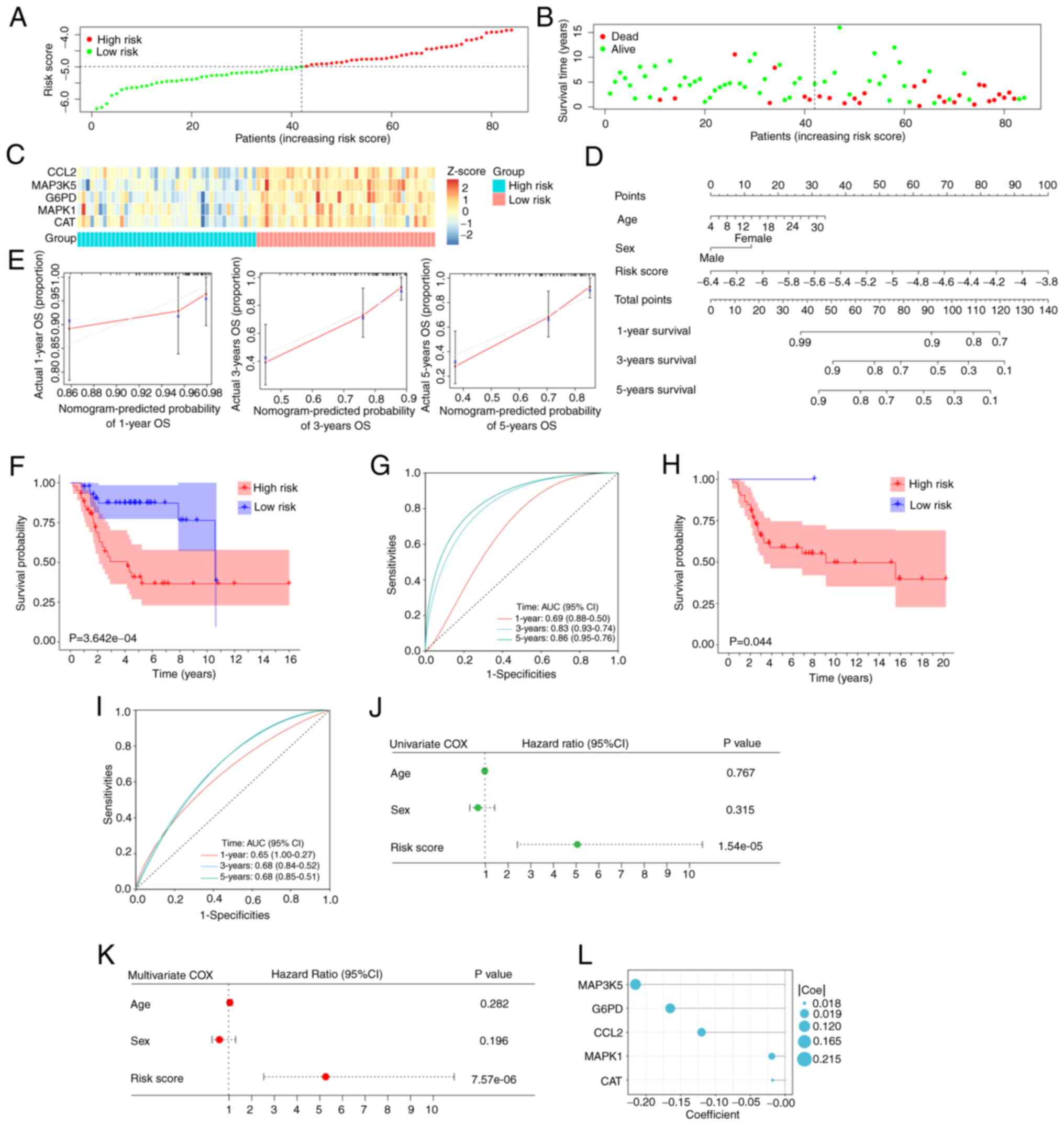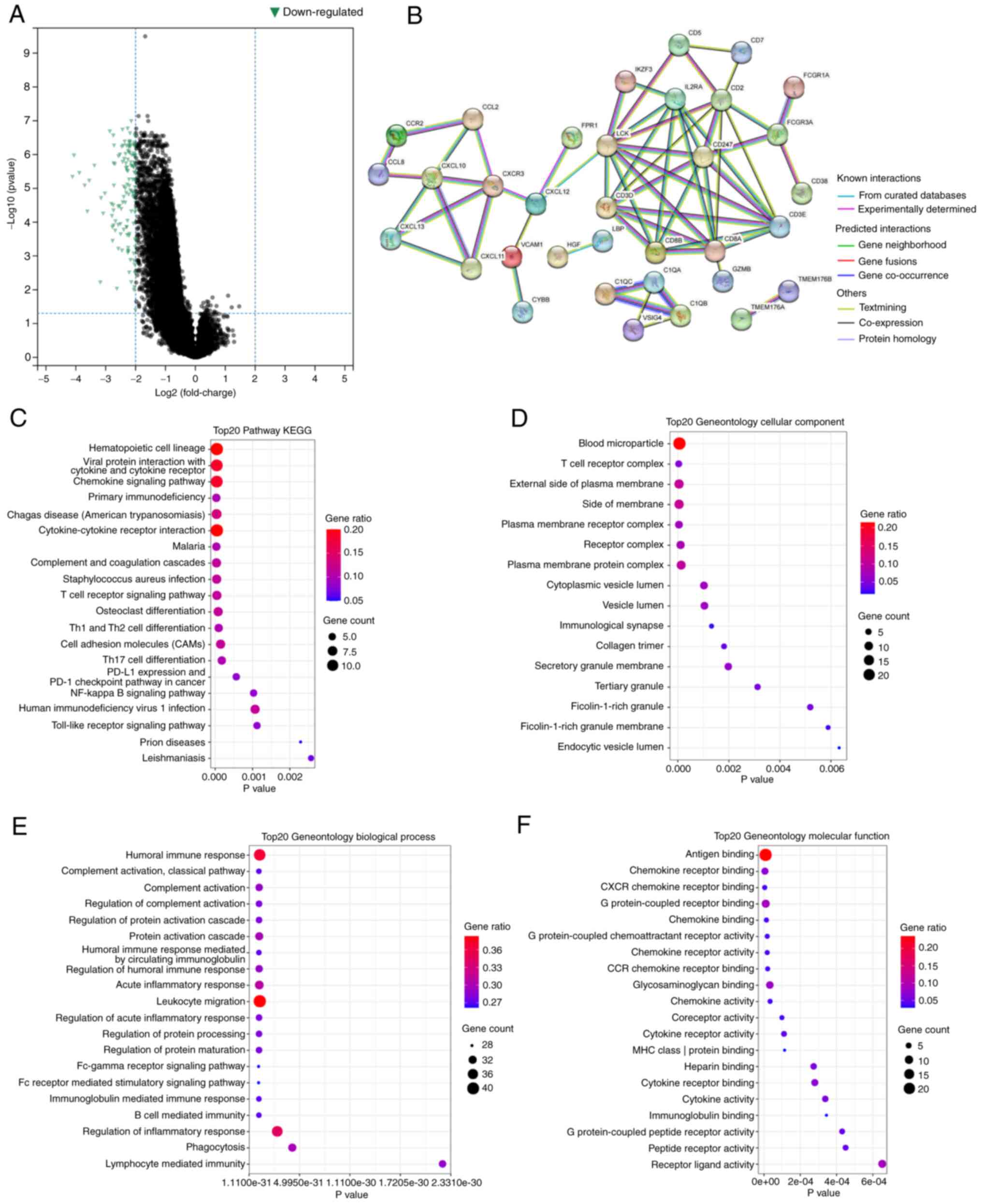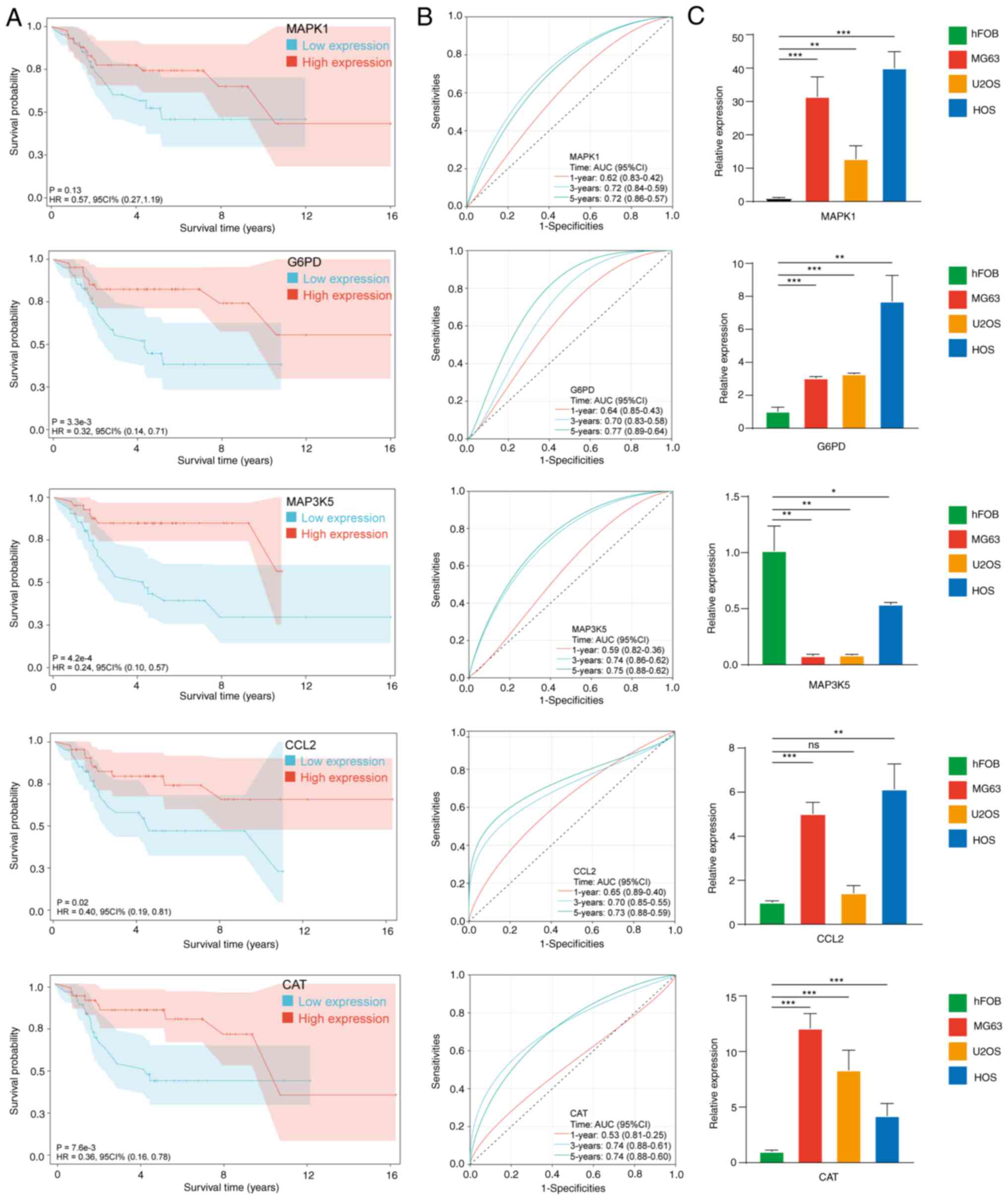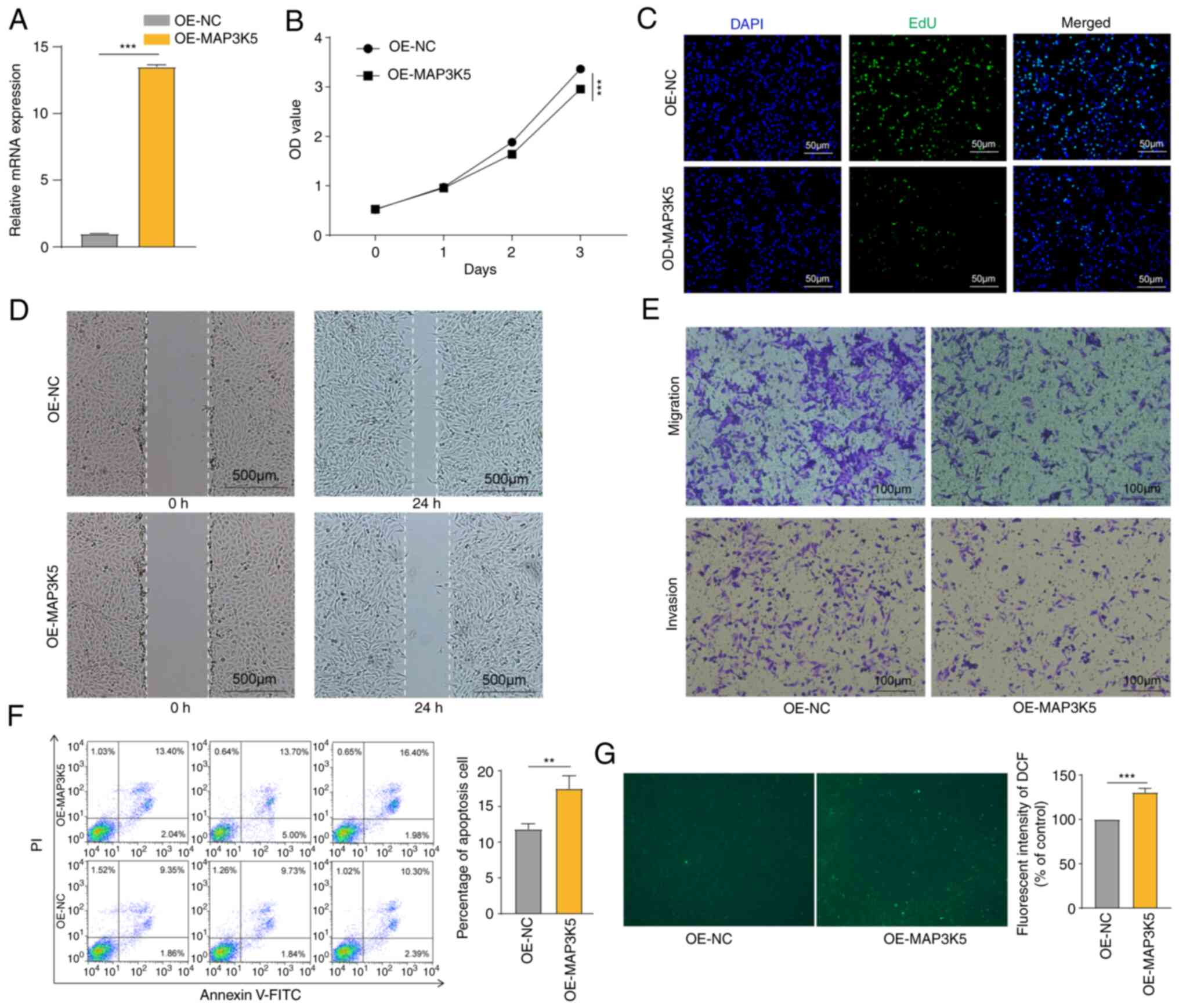|
1
|
Kansara M, Teng MW, Smyth MJ and Thomas
DM: Translational biology of osteosarcoma. Nat Rev Cancer.
14:722–735. 2014. View
Article : Google Scholar : PubMed/NCBI
|
|
2
|
Wang T, Wang L, Zhang L, Long Y, Zhang Y
and Hou Z: Single-cell RNA sequencing in orthopedic research. Bone
Res. 11:102023. View Article : Google Scholar : PubMed/NCBI
|
|
3
|
Wu CC and Livingston JA: Genomics and the
immune landscape of osteosarcoma. Adv Exp Med Biol. 1258:21–36.
2020. View Article : Google Scholar : PubMed/NCBI
|
|
4
|
Sun W, Wang B, Qu XL, Zheng BQ, Huang WD,
Sun ZW, Wang CM and Chen Y: Metabolism of reactive oxygen species
in osteosarcoma and potential treatment applications. Cells.
9:872019. View Article : Google Scholar : PubMed/NCBI
|
|
5
|
Liu W, Zhao Y, Wang G, Feng S, Ge X, Ye W,
Wang Z, Zhu Y, Cai W, Bai J and Zhou X: TRIM22 inhibits
osteosarcoma progression through destabilizing NRF2 and thus
activation of ROS/AMPK/mTOR/autophagy signaling. Redox Biol.
53:1023442022. View Article : Google Scholar : PubMed/NCBI
|
|
6
|
Sarmiento-Salinas FL, Perez-Gonzalez A,
Acosta-Casique A, Ix-Ballote A, Diaz A, Treviño S, Rosas-Murrieta
NH, Millán-Perez-Peña L and Maycotte P: Reactive oxygen species:
Role in carcinogenesis, cancer cell signaling and tumor
progression. Life Sci. 284:1199422021. View Article : Google Scholar : PubMed/NCBI
|
|
7
|
Cheung EC and Vousden KH: The role of ROS
in tumour development and progression. Nat Rev Cancer. 22:280–297.
2022. View Article : Google Scholar : PubMed/NCBI
|
|
8
|
Roy K, Wu Y, Meitzler JL, Juhasz A, Liu H,
Jiang G, Lu J, Antony S and Doroshow JH: NADPH oxidases and cancer.
Clin Sci (Lond). 128:863–875. 2015. View Article : Google Scholar : PubMed/NCBI
|
|
9
|
García JG, Ansorena E, Izal I, Zalba G, de
Miguel C and Milagro FI: Structure, regulation, and physiological
functions of NADPH oxidase 5 (NOX5). J Physiol Biochem. Mar
11–2023.(Epub ahead of print). View Article : Google Scholar
|
|
10
|
Moloney JN, Stanicka J and Cotter TG:
Subcellular localization of the FLT3-ITD oncogene plays a
significant role in the production of NOX- and
p22phox-derived reactive oxygen species in acute myeloid
leukemia. Leuk Res. 52:34–42. 2017. View Article : Google Scholar : PubMed/NCBI
|
|
11
|
Sabharwal SS and Schumacker PT:
Mitochondrial ROS in cancer: Initiators, amplifiers or an Achilles'
heel? Nat Rev Cancer. 14:709–721. 2014. View Article : Google Scholar : PubMed/NCBI
|
|
12
|
Marcucci G, Domazetovic V, Nediani C,
Ruzzolini J, Favre C and Brandi ML: Oxidative stress and natural
antioxidants in osteoporosis: Novel preventive and therapeutic
approaches. Antioxidants (Basel). 12:3732023. View Article : Google Scholar : PubMed/NCBI
|
|
13
|
Bai H, Chen G, Fang C, Yang X, Yu S and
Hai C: Osteosarcoma cell proliferation and migration are partly
regulated by redox-activated NHE-1. J Clin Transl Res. 1:168–179.
2015.PubMed/NCBI
|
|
14
|
Shin SH, Choi YJ, Lee H, Kim HS and Seo
SW: Oxidative stress induced by low-dose doxorubicin promotes the
invasiveness of osteosarcoma cell line U2OS in vitro. Tumour Biol.
37:1591–1598. 2016. View Article : Google Scholar : PubMed/NCBI
|
|
15
|
Warde-Farley D, Donaldson SL, Comes O,
Zuberi K, Badrawi R, Chao P, Franz M, Grouios C, Kazi F, Lopes CT,
et al: The GeneMANIA prediction server: Biological network
integration for gene prioritization and predicting gene function.
Nucleic Acids Res. 38:W214–W220. 2010. View Article : Google Scholar : PubMed/NCBI
|
|
16
|
Yu G, Wang LG, Han Y and He QY:
clusterProfiler: An R package for comparing biological themes among
gene clusters. OMICS. 16:284–287. 2012. View Article : Google Scholar : PubMed/NCBI
|
|
17
|
R-Forge: estimate: Estimate of stromal and
immune cells in malignant tumor tissues from expression data.
https://R-Forge.R-project.org/projects/estimate/
|
|
18
|
Ritchie ME, Phipson B, Wu D, Hu Y, Law CW,
Shi W and Smyth GK: limma powers differential expression analyses
for RNA-sequencing and microarray studies. Nucleic Acids Res.
43:e472015. View Article : Google Scholar : PubMed/NCBI
|
|
19
|
Zhang L, Jiao G, Ren S, Zhang X, Li C, Wu
W, Wang H, Liu H, Zhou H and Chen Y: Exosomes from bone marrow
mesenchymal stem cells enhance fracture healing through the
promotion of osteogenesis and angiogenesis in a rat model of
nonunion. Stem Cell Res Ther. 11:382020. View Article : Google Scholar : PubMed/NCBI
|
|
20
|
Zheng D, Xia K, Yu L, Gong C, Shi Y, Li W,
Qiu Y, Yang J and Guo W: A novel six metastasis-related prognostic
gene signature for patients with osteosarcoma. Front Cell Dev Biol.
9:6992122021. View Article : Google Scholar : PubMed/NCBI
|
|
21
|
Morgan MJ and Liu ZG: Crosstalk of
reactive oxygen species and NF-κB signaling. Cell Res. 21:103–115.
2011. View Article : Google Scholar : PubMed/NCBI
|
|
22
|
Sun SC: The noncanonical NF-κB pathway.
Immunol Rev. 246:125–140. 2012. View Article : Google Scholar : PubMed/NCBI
|
|
23
|
Sahoo BM, Banik BK, Borah P and Jain A:
Reactive oxygen species (ROS): Key components in cancer therapies.
Anticancer Agents Med Chem. 22:215–222. 2022. View Article : Google Scholar : PubMed/NCBI
|
|
24
|
Parkinson EK, Haferkamp S and Mycielska
ME: Cancer cell metabolism. Int J Mol Sci. 23:72102022. View Article : Google Scholar : PubMed/NCBI
|
|
25
|
PavlovaN N, Zhu J and Thompson CB: The
hallmarks of cancer metabolism: Still emerging. Cell Metab.
34:355–377. 2022. View Article : Google Scholar : PubMed/NCBI
|
|
26
|
Diehn M, Cho RW, Lobo NA, Kalisky T, Dorie
MJ, Kulp AN, Qian D, Lam JS, Ailles LE, Wong M, et al: Association
of reactive oxygen species levels and radioresistance in cancer
stem cells. Nature. 458:780–783. 2009. View Article : Google Scholar : PubMed/NCBI
|
|
27
|
Babior BM, Kipnes RS and Curnutte JT:
Biological defense mechanisms. The production by leukocytes of
superoxide, a potential bactericidal agent. J Clin Invest.
52:741–744. 1973. View Article : Google Scholar : PubMed/NCBI
|
|
28
|
Yang Y, Bazhin AV, Werner J and
Karakhanova S: Reactive oxygen species in the immune system. Int
Rev Immunol. 32:249–270. 2013. View Article : Google Scholar : PubMed/NCBI
|
|
29
|
Wu J, Zhang C and Chen L: MiR-511 mimic
transfection inhibits the proliferation, invasion of osteosarcoma
cells and reduces metastatic osteosarcoma tumor burden in nude mice
via targeting MAPK1. Cancer Biomark. 26:343–351. 2019. View Article : Google Scholar : PubMed/NCBI
|
|
30
|
Wang X, Chen K and Zhao Z: LncRNA OR3A4
regulated the growth of osteosarcoma cells by modulating the
miR-1207-5p/G6PD signaling. Onco Targets Ther. 13:3117–3128. 2020.
View Article : Google Scholar : PubMed/NCBI
|
|
31
|
Chen Q, Sun W, Liao Y, Zeng H, Shan L, Yin
F, Wang Z, Zhou Z, Hua Y and Cai Z: Monocyte chemotactic protein-1
promotes the proliferation and invasion of osteosarcoma cells and
upregulates the expression of AKT. Mol Med Rep. 12:219–225. 2015.
View Article : Google Scholar : PubMed/NCBI
|
|
32
|
Challa TD, Wueest S, Lucchini FC, Dedual
M, Modica S, Borsigova M, Wolfrum C, Blüher M and Konrad D: Liver
ASK1 protects from non-alcoholic fatty liver disease and fibrosis.
EMBO Mol Med. 11:e101242019. View Article : Google Scholar : PubMed/NCBI
|
|
33
|
Zhao H, Chen X, Hu G, Li C, Guo L, Zhang
L, Sun F, Xia Y, Yan W, Cui Z, et al: Small extracellular vesicles
from brown adipose tissue mediate exercise cardioprotection. Circ
Res. 130:1490–1506. 2022. View Article : Google Scholar : PubMed/NCBI
|
|
34
|
Ichijo H, Nishida E, Irie K, ten Dijke P,
Saitoh M, Moriguchi T, Takagi M, Matsumoto K, Miyazono K and Gotoh
Y: Induction of apoptosis by ASK1, a mammalian MAPKKK that
activates SAPK/JNK and p38 signaling pathways. Science. 275:90–94.
1997. View Article : Google Scholar : PubMed/NCBI
|
|
35
|
Matsuzawa A, Saegusa K, Noguchi T,
Sadamitsu C, Nishitoh H, Nagai S, Koyasu S, Matsumoto K, Takeda K
and Ichijo H: ROS-dependent activation of the TRAF6-ASK1-p38
pathway is selectively required for TLR4-mediated innate immunity.
Nat Immunol. 6:587–592. 2005. View
Article : Google Scholar : PubMed/NCBI
|
|
36
|
Gao G and Jian Y: MicroRNA-494 represses
osteosarcoma development by modulating ASK-1 related apoptosis
complexes. Transl Cancer Res. 9:4121–4130. 2020. View Article : Google Scholar : PubMed/NCBI
|

















